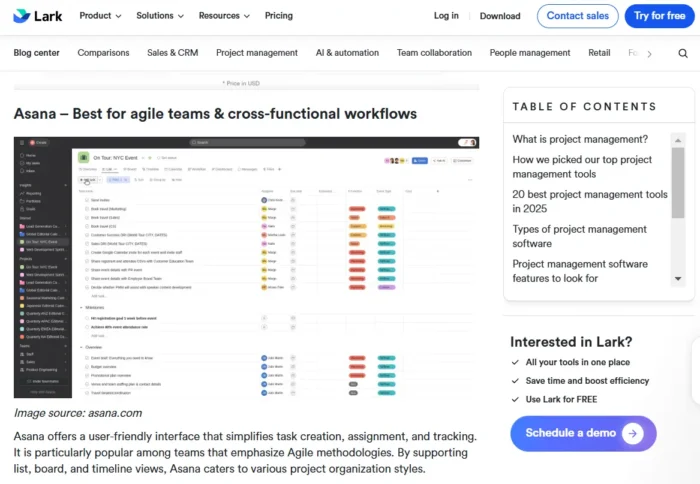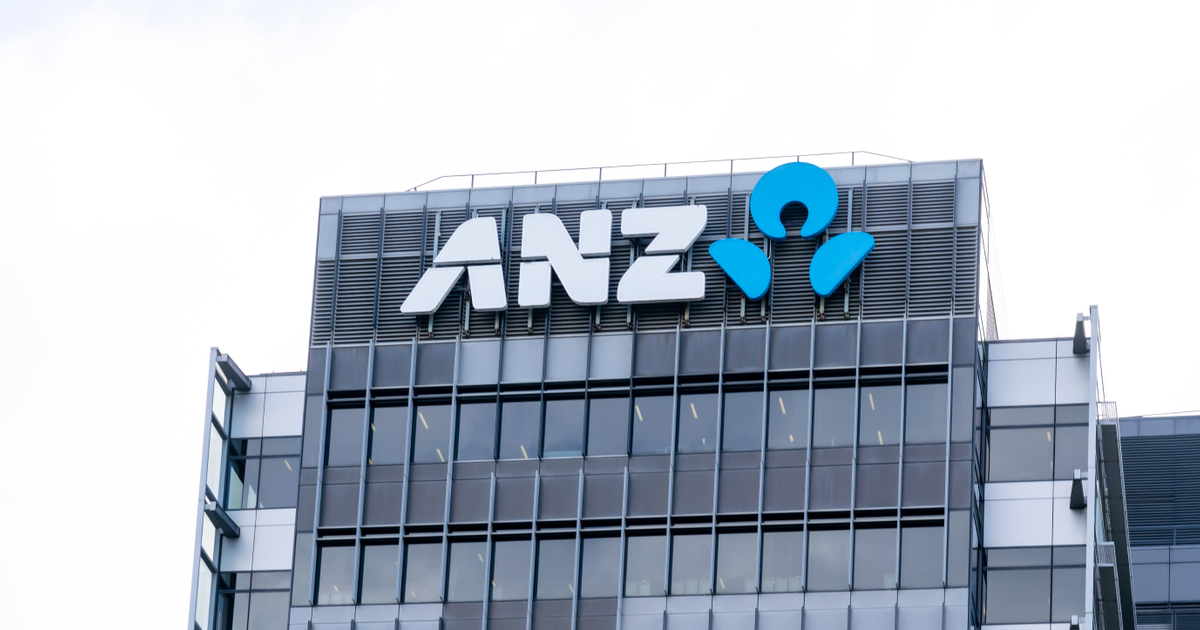SUSTAINABLE FINANCE ROUNDTABLE 2023: Driving new demand for sustainable debt
At an ANZ-sponsored roundtable in mid-June 2023 – jointly held in Hong Kong, Singapore, Sydney, Auckland and Wellington – investors and borrowers from across the region shared their experiences, preferences, strategies and visions in relation to how to spur...

Promoted Content
At an ANZ-sponsored roundtable in mid-June 2023 – jointly held in Hong Kong, Singapore, Sydney, Auckland and Wellington – investors and borrowers from across the region shared their experiences, preferences, strategies and visions in relation to how to spur green, social and sustainability (GSS) issuance for the rest of 2023, and beyond.

July 13, 2023
Sydney
Di Mantell, Chief Executive Officer, Celsus Stephen Smith, General Manager, Sustainability, NBN Katharine Tapley, Head of Sustainable Finance, ANZ Nancy Wang, Director, Sustainable Finance, ANZHong Kong
Chi Zhang, Head of Sustainable Investment, AIA Kenny Hsieh, Director, Sustainable Finance, ANZSingapore
Jacquelin Huang, ESG Specialist, BNP Paribas Asset Management Yi-Chen Chiang, Senior Sustainable Investing Analyst, Manulife Investment Management Sarah Ng, Director, Debt Capital Markets, ANZ Mara Chiorean, Director, Sustainable Finance, ANZAuckland
Katlyn Parker, Investment Analyst and Portfolio Manager, Milford Asset Management Fraser Gunn, Investment Manager, Kiwi Property Caroline Poujol, Director, Sustainable Finance, ANZ Carolyn Ng, Head of Debt Capital Markets, New Zealand, ANZWellington
Karina Witty, Senior Funding and Engagement Strategist, NZDM Simon Pannett, Senior Credit Analyst, Harbour Asset Management Dean Spicer, Head of Sustainable Finance, New Zealand, ANZ
Revitalising sustainable finance issuance
After a period of subdued activity for sustainable finance amid global macro challenges, Asia Pacific is seeing governments and policymakers spearhead various initiatives with the aim of spurring issuance in local markets as well as higher standards of reporting.
 “For 2023, we are seeing a strong pick-up in activity again and we are expecting to see a record year for sustainable finance volume,” said Katharine Tapley, head of sustainable finance at ANZ.
“For 2023, we are seeing a strong pick-up in activity again and we are expecting to see a record year for sustainable finance volume,” said Katharine Tapley, head of sustainable finance at ANZ.
This is good news given the critical role that sustainable finance can play in catalysing and facilitating net zero and nature-positive outcomes, she added. Yet it is also welcome given that some sustainable finance issuers paused activity in 2022, during the global volatility driven by various world events including the war in eastern Europe and interest rate hikes.
A further reason for the slowing issuance, added Katlyn Parker, investment analyst and portfolio manager at Milford Asset Management in New Zealand, has been a declining financial incentive for issuers in terms of greenium. “If you think of it as 5bps vs interest rates of 5% to 6%, the benefit for issuers becomes diluted.”
Much of the issuance that has happened has come at opportunistic times when the market has been open. “This makes it more difficult for issuers which don’t have the required documentation ready,” added Parker. “Given the quantum of the issuance we have seen in the ESG space in previous years, the refinancing requirements of those companies who have the ability to issue a green bond have also lessened.”
However, borrowers did remain focused over the past 12 to 18 months on sustainability in the loan markets, explained Tapley. “[They were] driven by net zero commitments and, in some cases, by mandatory disclosure regimes, or by broader sustainability agendas.”
Individual markets across the region have also been working hard to create momentum for sustainable finance.
 In Hong Kong, for example, the latest budget announcement reflects an increased focus on sustainable finance. The local market is also seeing more GSS issuance, said Kenny Hsieh, director, sustainable finance at ANZ – with Hong Kong accounting for almost 11% of total GSS issuance volume for Asia Pacific as of mid-June 2023, at roughly US$15 billion.
In Hong Kong, for example, the latest budget announcement reflects an increased focus on sustainable finance. The local market is also seeing more GSS issuance, said Kenny Hsieh, director, sustainable finance at ANZ – with Hong Kong accounting for almost 11% of total GSS issuance volume for Asia Pacific as of mid-June 2023, at roughly US$15 billion.
“The Government of the HKSAR is leading the way with US$12 billion worth of green bonds issuance since the start of this year,” added Hsieh.
Singapore is also making good progress in promoting sustainability in general, as well as sustainable finance instruments, with the government and private sector working hand-in-hand.
 “The government’s debut green issuance in 2022 was a watershed in setting an example for local corporates,” explained Sarah Ng, director, debt capital markets at ANZ. “We see increased rigour in the reporting of sustainability targets, which has made Singapore-based companies ready to expand issuance to meet investor appetite and expectations.”
“The government’s debut green issuance in 2022 was a watershed in setting an example for local corporates,” explained Sarah Ng, director, debt capital markets at ANZ. “We see increased rigour in the reporting of sustainability targets, which has made Singapore-based companies ready to expand issuance to meet investor appetite and expectations.”
New Zealand, meanwhile, has stood out, with locally led GSS volume outpacing many other markets in recent years. According to Dean Spicer, head of sustainable finance for ANZ in New Zealand, this activity has in part been supported by growing green issuance, as well as by increasing knowledge and sophistication.
“Locally, we are seeing a greater focus on reporting, where verification of labelled transactions is seen as a ‘must have’. In general, the labelled format is helping to spur innovation and diversification,” added Spicer.
Issuers strive to keep pace with a demanding market
To capitalise on new and emerging opportunities, issuers with experience of GSS instruments need to stay focused on ongoing reporting requirements associated with earlier issuance, and also on identifying as many eligible expenditures as possible for future plans to go to market.
 At New Zealand Debt Management (NZDM), part of the Treasury, Karina Witty, senior funding and engagement strategist, said that after issuing its first green bond at the end of 2022, from the programme set up earlier in the year, the main focus is now on allocation and impact reporting.
At New Zealand Debt Management (NZDM), part of the Treasury, Karina Witty, senior funding and engagement strategist, said that after issuing its first green bond at the end of 2022, from the programme set up earlier in the year, the main focus is now on allocation and impact reporting.
“This involves working across government with many different agencies to support development in reporting on financials, as well as outputs and outcomes. We are also looking to identify as many eligible expenditures as possible to meet our criteria for inclusion in the programme,” she added.
Getting the ongoing plan right has also been a key focus for Celsus, the consortium that manages and maintains the Royal Adelaide Hospital under a Public Private Partnership (PPP). Its A$2.5 billion green and social loan in 2021 was the largest globally in the healthcare sector at the time, and refinanced again in June 2023, further securing a green and social loan, the only loan of this type in Australia.
“To achieve this, we had to ensure we had a green and social finance framework approved by a third party. Since then, we have established an ESG strategy and framework that our board and securityholders have invested in, so we can target a 50% reduction in emissions to achieve net zero by 2030 and then be fully net zero by 2050 using a science-based approach,” explained Di Mantell, chief executive officer at Celsus.
At NBN, a publicly owned corporation of the Australian Government tasked to design, build and operate the country’s national broadband network, its A$800 million green bond in Australia in 2022, and a A$2.1 billion green bond in Europe earlier in 2023, has required the issuer to be prepared and respond to various changes from regulators, investors and many other interested stakeholders.
 Stephen Smith, the firm’s general manager, sustainability, said that while reflecting on the deals, he considers sustainable finance as an opportunity to help NBN achieve its sustainability objectives. At the same time, as a wholly-owned Commonwealth company and Government-Business Enterprise, NBN has needed to be flexible and responsive to emerging sustainability standards and requirements, both domestically and internationally.
Stephen Smith, the firm’s general manager, sustainability, said that while reflecting on the deals, he considers sustainable finance as an opportunity to help NBN achieve its sustainability objectives. At the same time, as a wholly-owned Commonwealth company and Government-Business Enterprise, NBN has needed to be flexible and responsive to emerging sustainability standards and requirements, both domestically and internationally.
“By way of example, we have recently moved to set near and long-term science-based targets in line with the Science Based Targets initiative (SBTi) and are developing our climate transition plan to ensure we are able to capture emerging GSS opportunities should they arise,” added Smith.
As a result, he welcomes efforts to develop standards for corporates in governance, strategy, processes and reporting in relation to sustainable finance.
Greater consistency and alignment is increasingly important for other issuers with multiple stakeholders. Kiwi Property, for instance, feels there are increasing expectations, not only from investors in its green bonds, but also from tenants and customers, to maintain a high level of sustainability requirements and credentials across the business, said Fraser Gunn, investment manager.
In response, ESG-related provisions are essential across many sectors – and are something that Mantell wants to see included for future PPP contracts in the Australian market. This wasn’t the case when her firm’s PPP was completed in 2011, but she was fortunate that when Celsus set up its green and social loan, it had a building management system to provide much of the data required for reporting. “[Going forward] I would hope there are ESG provisions included, to embed these commitments and facilitate green and other sustainable financing going forward.”
 Other issuers broadly agree. “In the medium term, we see demands within the market leading to loans being granted conditional on sustainability requirements being met,” said Gunn at Kiwi Property. “As a result, our early entry into the green finance space is positive for us, potentially lowering our all-in funding costs, making our business more energy efficient and enhancing our corporate reputation.”
Other issuers broadly agree. “In the medium term, we see demands within the market leading to loans being granted conditional on sustainability requirements being met,” said Gunn at Kiwi Property. “As a result, our early entry into the green finance space is positive for us, potentially lowering our all-in funding costs, making our business more energy efficient and enhancing our corporate reputation.”
Investing with high expectations
Notably, as investor appetite for GSS instruments grows, there is closer scrutiny over issuers’ net zero commitments and associated disclosure.
AIA, for example, has moved swiftly since signing up to the SBTi in 2021, and is already on track to have its near-term targets validated by SBTi by the end of 2023. “We want to ensure our investee companies are also on the right trajectory to decarbonise,” said Chi Zhang, the insurance company’s head of sustainable investment.
In line with this, AIA looks for sufficient company disclosure, formal commitments to net zero, as well as the relevant governance, as part of the journeys these companies are making.
 Manulife Financial Corporation is also committed to net zero by 2050 and to SBTi for its General Account investment portfolio. And for Manulife Investment Management, the firm will offer choices to its investors – from ESG integration to dedicated ESG thematic funds.
Manulife Financial Corporation is also committed to net zero by 2050 and to SBTi for its General Account investment portfolio. And for Manulife Investment Management, the firm will offer choices to its investors – from ESG integration to dedicated ESG thematic funds.
“We are looking for more credible and innovative sustainable finance instruments in Asia Pacific, in line with key objectives such as climate change and biodiversity,” explained Yi-Chen Chiang, senior sustainable investing analyst at the asset manager.
BNP Paribas Asset Management is another global fund house that has high expectations for GSS bonds and focuses on high-quality green bonds – based on its net zero roadmap, published in 2022 to reflect the importance of climate change, transition and decarbonisation.
“We therefore constantly engage with issuers on our preferences and want to contribute to the development of higher market standards,” added Jacquelin Huang, ESG specialist at the firm.
Indeed, just buying certain instruments such as green bonds, for example, won’t be enough for those investors with their own targets. “We have therefore made it a high priority to engage investee companies. We conduct investee company engagements on specific themes or sectors. Our ESG and investment functions coordinate on a wide range of areas for engagement activities,” said Zhang.
 Various other considerations also cannot be overlooked in the GSS space. At Milford Asset Management, for instance, the majority of funds have a mandate or a returns-based outcome, creating a fiduciary duty to deliver the best outcome for clients and help ensure the returns stack up.
Various other considerations also cannot be overlooked in the GSS space. At Milford Asset Management, for instance, the majority of funds have a mandate or a returns-based outcome, creating a fiduciary duty to deliver the best outcome for clients and help ensure the returns stack up.
“We are supportive of the sustainable finance market but it would be very difficult to take less of a return unless there is an economic rationale,” said Parker. “An example could be that we would be happy to take a smaller spread because we think bonds will perform better as other investors will crowd into the instrument too.”
Being diversified is another important factor – and not always something that is easy to address.
“My biggest challenge, as both a credit analyst and in managing the fixed income component of an impact fund, is getting enough sector diversification from companies that are genuinely trying to deliver sustainability,” explained Simon Pannett, senior credit analyst at Harbour Asset Management.
 For Zhang, green bonds with longer tenors are also desirable, instead of mostly 3-5 years. “We are an active investor in GSS bonds. We held $4.3 billion in GSS bonds as at 31 December 2022. We nevertheless cannot participate in many GSS bond transactions given our duration matching requirements.”
For Zhang, green bonds with longer tenors are also desirable, instead of mostly 3-5 years. “We are an active investor in GSS bonds. We held $4.3 billion in GSS bonds as at 31 December 2022. We nevertheless cannot participate in many GSS bond transactions given our duration matching requirements.”
Raising standards and widening the range of labels
As the sustainable finance landscape continues to evolve, market players are looking at new formats and labels to gain greater traction, plus to meet objectives such as social equality and transition journeys.
Celsus, for example, is looking closely at social indicators it can contribute to. As part of this, it has partnered with various groups around educational and training programmes, as well as reducing homelessness and other initiatives. “Our ESG platform enables us to promote this agenda, however it is a difficult area since there is a fine line between what we can achieve without crossing the line in what clinical services the State provides,” explained Mantell.
It’s no surprise for issuers to find it challenging to credibly measure social impact, given the subjective nature of the subject matter. “Standards for social impact measurement are evolving, which is welcomed to ensure companies respond to this emerging issue consistently’,” added Smith.
Transition finance is another area where market players face challenges. “I support transition bonds, but the barrier I see is the bias towards an exclusionary approach of some players, which influences fund selection and, ultimately, makes it harder to hold transition bonds. More nuance needs to be introduced,” said Pannett.
 Huang shares concerns about transition finance. “We recognise the good intentions of some companies and actively support their development of more credible pathways towards decarbonisation. Whether they have the right tools, resources or data to get them there is also a significant challenge. We also recognise the importance of a ‘just transition’, to encourage companies to focus on socioeconomic wellbeing and inclusion alongside decarbonisation.”
Huang shares concerns about transition finance. “We recognise the good intentions of some companies and actively support their development of more credible pathways towards decarbonisation. Whether they have the right tools, resources or data to get them there is also a significant challenge. We also recognise the importance of a ‘just transition’, to encourage companies to focus on socioeconomic wellbeing and inclusion alongside decarbonisation.”
At the same time, various tools like internal ESG Rating Scorecards and external ESG research can help investors understand nuances of where companies are at in their transition journeys, added Zhang.
In Chiang’s view, she encourages companies to develop a credible transition plan with time-bound milestones to be Paris-aligned by 2030.
“For credible transactions, a lot of sustainability-linked bonds (SLBs) are focusing on emissions, but we believe a credible SLB should also take into consideration how Scope 3 emissions are material to the relevant industry sectors,” she added. “Whilst we understand measuring of Scope 3 is challenging, we believe Singapore is well-positioned to cultivate such an ecosystem with technology providers to help corporates to understand the emissions from their value chain and determine a long-term decarbonisation plan.”
 Biodiversity is also increasingly on the radar of investors and issuers alike. According to Nancy Wang, director, sustainable finance at ANZ, although much of the market has focused previously on climate change, there is increased demand around nature-related opportunities. “Market participants know they need to act.”
Biodiversity is also increasingly on the radar of investors and issuers alike. According to Nancy Wang, director, sustainable finance at ANZ, although much of the market has focused previously on climate change, there is increased demand around nature-related opportunities. “Market participants know they need to act.”
Creating a roadmap for GSS growth
To help the sustainable finance market grow and develop further, market participants in different parts of Asia Pacific expect an increase in reporting requirements, regulations and standards to foster higher GSS issuance volumes.
In terms of future drivers for New Zealand, regulations coming into force in 2024 include a mandatory climate related disclosure regime for large, listed corporates as well as asset managers. “This is supporting improvements in reporting requirements,” said Spicer.
Issuers like as NZDM welcome such steps. “We are focused on ensuring good practices in terms of reporting and transparency relating to our programme and the expenditures included in it,” said Witty. “We are already looking closely at the type of information we need for our first impact report, which is due to be released late next year.”
At the same time, as part of Singapore’s efforts to become an international sustainable finance hub, the Monetary Authority of Singapore recently launched a new Finance for Net Zero Action Plan.
 According to Mara Chiorean, director, sustainable finance at ANZ, this should further drive the growth of the sustainable and transition finance market in the region. “Some highlights of the Plan include the “3Ds” – definitions, data and disclosure – underpinned by the expected launch this year of the Singapore Asia Taxonomy. Another key theme in the Plan is a strong narrative to move beyond capital allocation to pure green towards the other 80% of the market that needs to transition.”
According to Mara Chiorean, director, sustainable finance at ANZ, this should further drive the growth of the sustainable and transition finance market in the region. “Some highlights of the Plan include the “3Ds” – definitions, data and disclosure – underpinned by the expected launch this year of the Singapore Asia Taxonomy. Another key theme in the Plan is a strong narrative to move beyond capital allocation to pure green towards the other 80% of the market that needs to transition.”
In Hong Kong, drivers to advance the market include the launch of the Green Classification Framework and the HKMA grant scheme to incentivise issuers of green financing by reimbursing their external costs. “Combined with the jump in GSS issuance volume, the outlook for sustainable finance in Hong Kong is positive,” added Hsieh.
Not letting perfection get in the way of progress
In general, open and ongoing dialogue between investors and issuers is critical to ensure a more transparent and conducive environment to bring new types of GSS instruments to market, as well as to encourage greater understanding and collaboration among all market players.
 As an issuer, Celsus is looking for more consistency and certainty in terms of the reporting it is required to do. However, just because there isn’t a perfect set of data shouldn’t prevent progress, added Mantell.
As an issuer, Celsus is looking for more consistency and certainty in terms of the reporting it is required to do. However, just because there isn’t a perfect set of data shouldn’t prevent progress, added Mantell.
With a similar goal in mind, Smith is pleased to see the ongoing development of local taxonomies led by the Australian Sustainable Finance Institute and supported by the Treasury department of the Australian Government. “It is important that local taxonomies align with international sustainable finance taxonomies as much as possible,” he said.
More broadly, Witty agrees that ongoing dialogue with investors is key to understanding what is important to them, how expectations are evolving and to test ideas. “There is no bible for determining what is ‘green’ and where the line is between ‘transition’ and ‘green’.”
It is also useful for investors to see how corporate targets align with the Paris Agreement, added Parker.
“We appreciate data and disclosure from issuers, to give us greater visibility about how the company is progressing towards net zero,” said Zhang. “The more credible the plans are, the happier we are to invest in these issuers.”
Yet with numerical reporting a challenge for some issuers, Pannett said he would like to get some narrative from issuers to support efforts in terms of reporting.
In particular, Huang appreciates good impact reporting and encourages an open mind when it comes to collaborating with different stakeholders and learning about best practices.
An effective way to achieve this is to hold formal and informal interactions and discussions with all parties on a company’s overall sustainability strategy and ESG journey. ”As active managers, we don’t select labelled bonds just because of the label – we need to dig into the details,” added Chiang.
Issuers also need to know what is important to investors, as well as which types of products will be attractive. “[Kiwi Property] issued our most recent green bond following a spike in market uncertainty in March 2023, but we still had strong demand, especially among retail investors. We continue to be committed to green bonds, and would be open to looking at other GSS products as well going forward,” said Gunn.
¬ Haymarket Media Limited. All rights reserved.
Promoted Content Markets Companies Banks Debt Debt Research #anz
 FrankLin
FrankLin 































